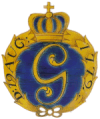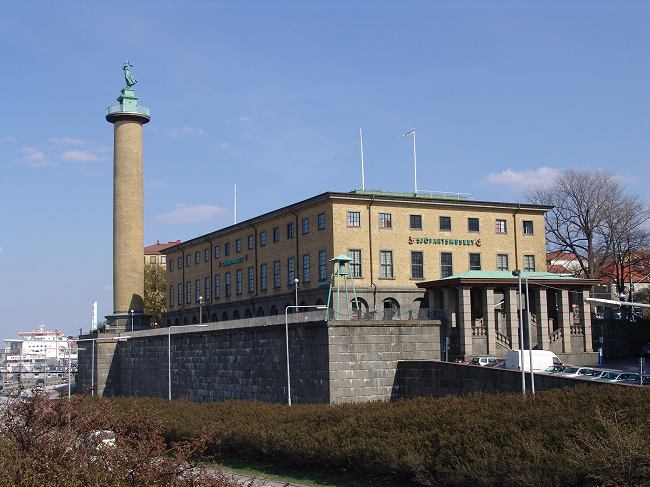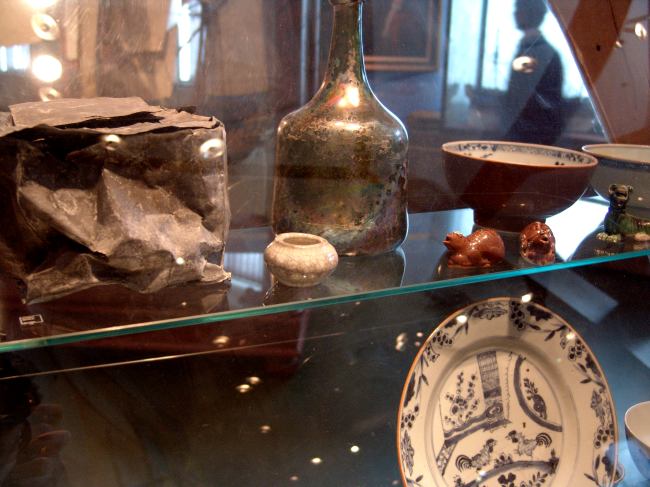

By Anna Rosengren
The Maritime Museum of Gothenburg with the Aquarium exhibits Swedish maritime history from the 17th century to the present day. The aim of the museum is to increase understanding of life in and on the seas. The museum was founded in 1913. Twenty years later, with financial support from the shipping family Broström, the museum moved to its present building situated in "The Old Shipyard Park," close to the former harbour.
The Maritime Museum of Gothenburg has a large collection of ships' figure heads, mainly from the second half of the 19th century. They represent historical and mythological beings. Many ship owners commissioned representations of themselves, their wives or their children. Another popular theme was the image of a beautiful woman, the sailor's dream. The collection is shown in the Memorial Hall located in the centre of the museum. The hall is also used for temporary exhibitions.
The permanent exhibition starts with the foundation of the town of Gothenburg and the story of Sweden during the 17th century. This was a period when Sweden had great military power and the government had ambitions to found overseas colonies. In 1637, the two ships Kalmar Nyckel and Fågel Grip filled with emigrants left Gothenburg for America. They headed to Delaware and founded the colony "New Sweden."
The museum displays several models of naval and merchant ships. The largest model is the East Indiaman Finland. Built to the impressive scale of 1:12, it measures 3.86 m in length. The original ship made seven voyages to China on behalf of the Swedish East India Company (1731-1813), which had its head office in Gothenburg. The exhibition tells the stories of the expeditions and shows examples of imported goods such as richly decorated plates and delicate figurines. Some of the porcelain salvaged from the wreck Gothenburg at the bottom of Göta the River is exhibited.

Finds from the sunken ship, the East Indiaman Gotheborg, 1745, exhibited at the Maritime Museum of Gothenburg.
The 19th century exhibition focuses on merchant shipping and the advent of steam powered vessels. There is a display section about the shipyard Götaverken, founded in 1811. Shipyards like Eriksberg, Götaverken and Lindholmen employed a great deal of the local inhabitants during the 19th century up until the 1970s. The city's leading role in the development of shipbuilding placed Gothenburg on the world map. Today there are only repair yards left, but the port of Gothenburg is still the largest port in Scandinavia.
By the end of the 19th century, emigration from Sweden to America began. This is presented in a separate display about the Swedish American Line (SAL). During this period, Sweden developed direct services between Gothenburg and New York. By the 1920s, the emigration peaks were over and SAL, one of the companies in the Broström group, became famous for their cruise ships.
Fishing for a living has played an important role on the west coast of Sweden since the 16th century. During the last part of the 20th century fishing became more and more industrialized. The development of fishing methods is depicted in a special exhibition.
The Aquarium displays underwater life in the region. Here one can study fishes like cod, eel, sea wolf, perch and pike, and invertebrates like hermit crabs and lobsters. Less known by most people are the sea anemones, which live along the Swedish west coast at such depths that diving equipment is required to see them. The Aquarium is one of the oldest temperate aquariums in the world. Though old, the aquarium is altogether modern, with the welfare of its inhabitants as one of its primary goals.
The museum's maritime archive contains, among other things, over 3,000 nautical charts of seas all over the world; the oldest chart is from the 17th century. There are approximately 1 million shipbuilding drawings from the late 18th century until the 1970s. The archive also includes about 40,000 photographs of ships, crews, harbours and lighthouses. The nautical library contains about 22, 000 volumes, mainly about Swedish and international shipping.
Next to the museum is the Mariner's Tower, a well-known silhouette on the city skyline. The tower commemorates the Swedish sailors who died in the First World War. Their names and the names of their ships are engraved at the base of the tower. In spite of Sweden's neutrality during the First and Second World Wars, several Swedish ships were torpedoed or occasionally hit mines, claiming the lives of many Swedish seamen. The statue on the top of the tower shows a grieving wife or mother, a symbol of the thoughts and prayers of those left on shore.
Anna Rosengren
Deputy Director, The Maritime Museum of Gothenburg
Web page: The Maritime Museum of Gothenburg